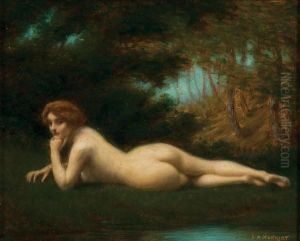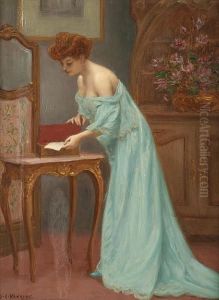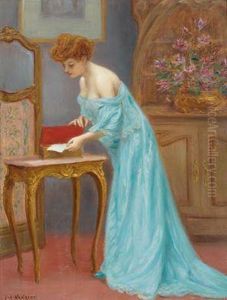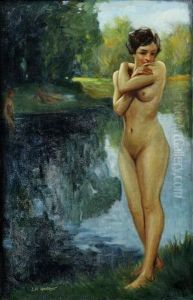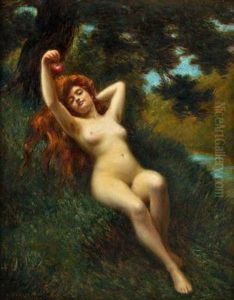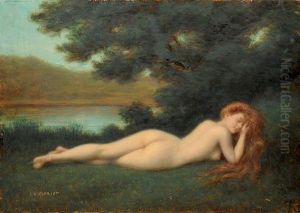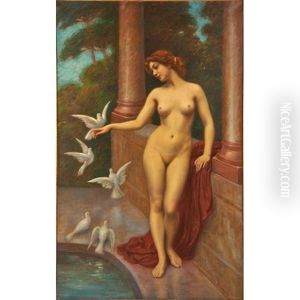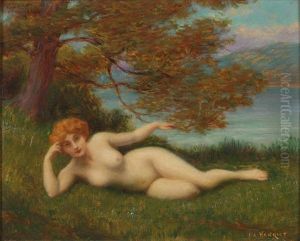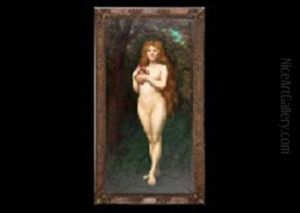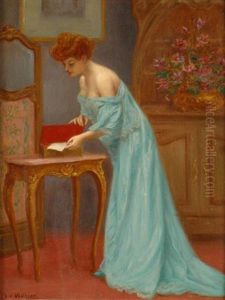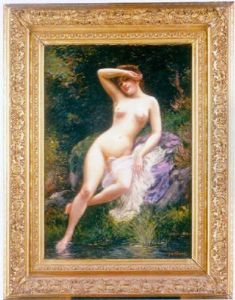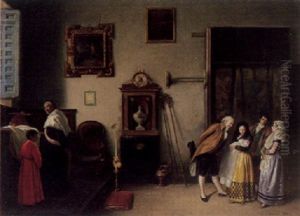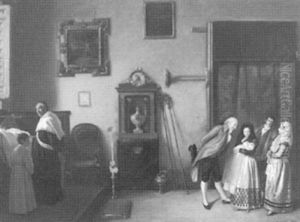Jules Armand Hanriot Paintings
Jules Armand Hanriot was a 19th-century French painter known for his delicate porcelain painting, watercolors, and oil paintings. Born on February 25, 1829, in Decize, Nièvre, France, Hanriot grew up in a period rich with artistic evolution, which was characterized by a transition from neoclassical and romantic styles to impressionism later in the century.
Hanriot studied under various prominent artists of the time, including the academic painter François-Édouard Picot, who was a classical painter known for his mythological and historical subjects. Under the influence of his mentors, Hanriot developed a style that emphasized careful composition, a clear narrative, and skilled use of color. He was also influenced by the Rococo revival in the mid-19th century, which is evident in the delicate and decorative qualities of his works.
Primarily known for his work with porcelain, Hanriot was an accomplished painter on this challenging medium. Porcelain painting during the 19th century was a prestigious genre, often associated with luxury and high society. These works required a meticulous technique as the paint had to be applied in layers and fired in a kiln to achieve the desired effect.
Despite his expertise in porcelain, Hanriot was also skilled in more traditional forms of painting. His watercolors and oil paintings often depicted genre scenes, allegories, and portraits, which were popular among the bourgeois clientele of the time. Genre scenes, which depicted everyday life with sentimental or moralizing narratives, were particularly well-received in the context of the growing middle class in France.
Throughout his career, Hanriot exhibited his works at the Paris Salon, the official art exhibition of the Académie des Beaux-Arts in Paris. The Salon was the pinnacle of an artist's recognition in France, and exhibiting there was a sign of prestige and talent. Hanriot's works were generally well received, and he garnered respect and recognition among his contemporaries.
Jules Armand Hanriot passed away on February 20, 1890, in Paris. While Hanriot may not be as widely known today as some of his contemporaries, his works remain a testament to the craftsmanship and aesthetic values of 19th-century French art, particularly in the specialized field of porcelain painting. His legacy is preserved in the collections of those who value the elegance and charm of this period's artistic production.
